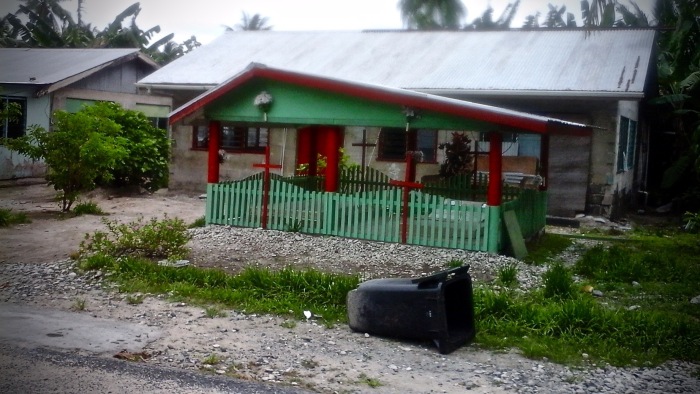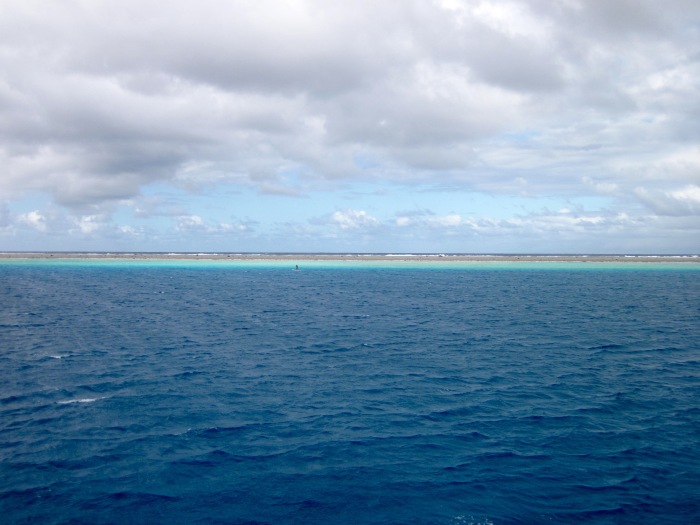Click the image below to read a PDF of my story “Canoe Commute,” published in the Summer 2017 issue of Capital Magazine.
Click the image below to read a PDF of my story “Canoe Commute,” published in the Summer 2017 issue of Capital Magazine.
Click the image below to read a PDF of my story “Escape from Pago Pago,” published in the September 2017 issue of Blue Water Sailing.
Click the image below to read a PDF of my story “Play Surf,” about Fanning Island, published in the September 2017 issue of Capital Magazine.
Click the image below to open a PDF of my article “Sailing Canoes of Ailuk Atoll,” published in the January 2017 issue of Wooden Boat Magazine.
A version of this story originally appeared in the magazine Capital #31, May 2016. Click the magazine image below to read the PDF.

 In Funafuti, in front of most homes there are large, long, cement boxes, sometimes neatly tiled, sometimes painted bright reds and greens and blues and pinks, sometimes festooned with garlands of plastic hibiscus, sometimes accompanied by carved crosses. Graves. All are big enough to house a human, the last remains of past family members, kept close to their future generations.
In Funafuti, in front of most homes there are large, long, cement boxes, sometimes neatly tiled, sometimes painted bright reds and greens and blues and pinks, sometimes festooned with garlands of plastic hibiscus, sometimes accompanied by carved crosses. Graves. All are big enough to house a human, the last remains of past family members, kept close to their future generations.
“It ties you to the land,” one man told us when we witnessed the same tradition on Bora Bora, and makes it very hard to sell. Or leave.
What if the land is the first to leave? To be on an atoll in Tuvalu is to be in the midst of the climate changing, an island disappearing.

A version of this story appeared in the November 2016 issue of Blue Water Sailing
Click on the magazine cover image below to read a PDF of the story. 
We’re about 800 miles north of New Zealand, six days into our sail to Tonga with more wind, wilder waves, and more violent squalls than the forecasters predicted.
We want to sleep in a bunk that isn’t pitching wildly. We want to eat a hot meal that isn’t flying off the plate or out of our stomachs. We want to stop, but we’re still 250 miles from our ultimate destination. Standing on the bow of our 41-foot sailboat, I’m desperately seeking North Minerva Reef but all I can see is sea. The only suggestion of land is a slight interruption in the eternal seascape, where the whitewashing waves seem to break in a different pattern.
There was a time not long ago when sailors like us would have actively avoided this place. North Minerva Reef isn’t really land. Imagine the rim of a cereal bowl barely submerged in a sink full of water. If we were birds, we could soar above and see the thin circle of coral reef, the barely visible remains of a collapsed volcano, like the letter C penciled onto paper then erased. Its cousin, South Minerva, 15 miles away, looks like an erased figure 8. At low tide, about three feet of coral and rock are exposed; at high tide, there’s nothing but water, though the rim of the reef is just high enough to hold back the full force of the waves, like a bodyguard braced against the melee. If we can get inside the lagoon, we’ll be able to drop our anchor in 50 feet of calm water and take a much-needed break.
We sail cautiously closer, searching for the break in the coral, like a sliver of a slice taken from a pie, where we might dare to enter the lagoon. Continue reading “Hove To in North Minerva”